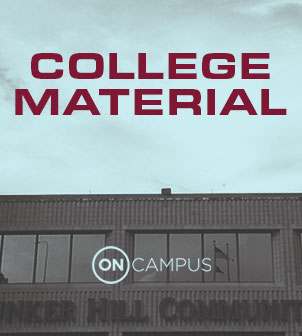
Students using the indoor climbing wall at Sterling College in Craftsbury Common, Vermont. (Sterling College/Flickr).
If you’ve been on a college campus lately, you might have noticed a few amenities - fancy welcome centers, golf courses, and saunas. Of course, these things cost money and therefore tuition and fees. But are they responsible for rising tuition?
In recent weeks, politicians have zeroed in on one example of excess on college campuses: the climbing wall.
It keeps popping up in speeches by representatives across the political spectrum, from New Jersey governor Chris Christie to Massachusetts Senator Elizabeth Warren.
"Some colleges have doubled down, in a competition for students that involves fancy dorms, high-end student centers, climbing walls,” Warren said in a speech to the American Federation of Teachers.
Do these extra amenities actually drive up the cost of college? To find out, On Campus visited a local campus climbing wall.
Inside Boston University's 270,000 square-foot recreation center, we found the school's climbing wall and met Sean Kurnas, who manages it.
Kurnas said he doesn't think it's over the top.
“I could never identify it as a colossal sign of waste, cause it’s not colossal by any means,” said Kurnas.
In fact, it's 30 feet tall. But how much do those 30 feet cost BU students?
BU administrators wouldn’t give us the specific numbers, but the average climbing wall costs about $100,000, depending on the specifics of each wall.
Kurnas says BU's wall pays for itself through summer camps, private lessons and birthday parties. He also says it's not actually that expensive to maintain.
“It’s easy to see how you could exaggerate or overestimate something like that,” Kurnas said. “But really we have maintenance of the wall, we purchase holds. But otherwise there’s no new equipment necessary.”
Still, that doesn't exonerate climbing walls in the public eye, says Jim Kadamus. He's vice president of Sightlines, a consulting firm that advises colleges and universities across the country on how to manage their facilities.
"I think it's a natural frustration for political people who see that the cost of college is growing, and they're seeing money going towards some of the amenities like climbing walls and lazy rivers and sun decks,” says Kadamus.
Despite widespread speculation, his research has found these campus amenities are not actually driving up tuition.
"Only about 15 percent of all the spending over the past five years has gone into those types of facilities on campus," says Kadamus.
He also points out that many of these facilities are supported by student user fees, rather than tuition. At Boston University, for example, students are charged three mandatory fees, one of which covers use of the rec facility.
Still, Kadamus says expensive rec and student centers, especially at smaller schools, can result in higher costs, unless the schools enroll more students.
“The schools where this is causing problems are the schools that invested and built these new facilities but didn't get the increase in enrollment," says Kadamus.
Higher ed economists say that while providing extras like climbing walls do cost money, fixating on them distracts us from addressing more serious questions about college spending.
Molly Boigon contributed to this report.










